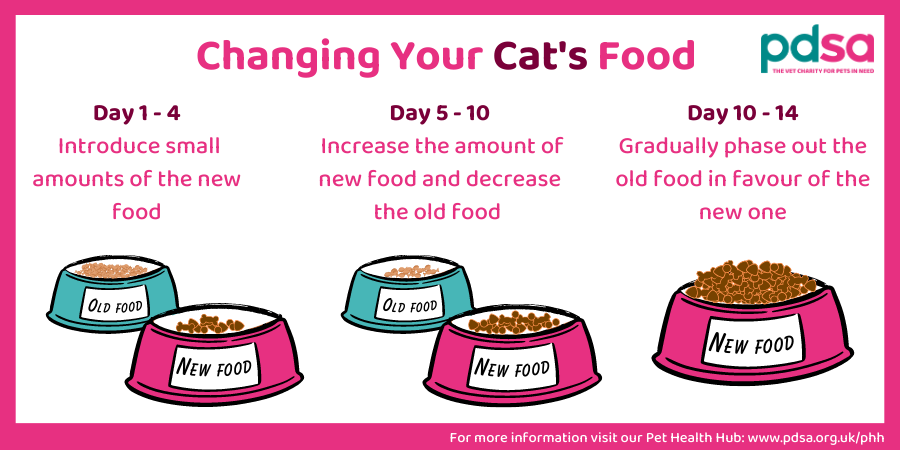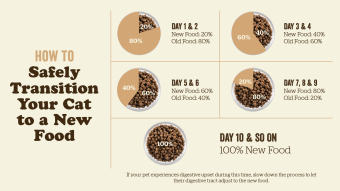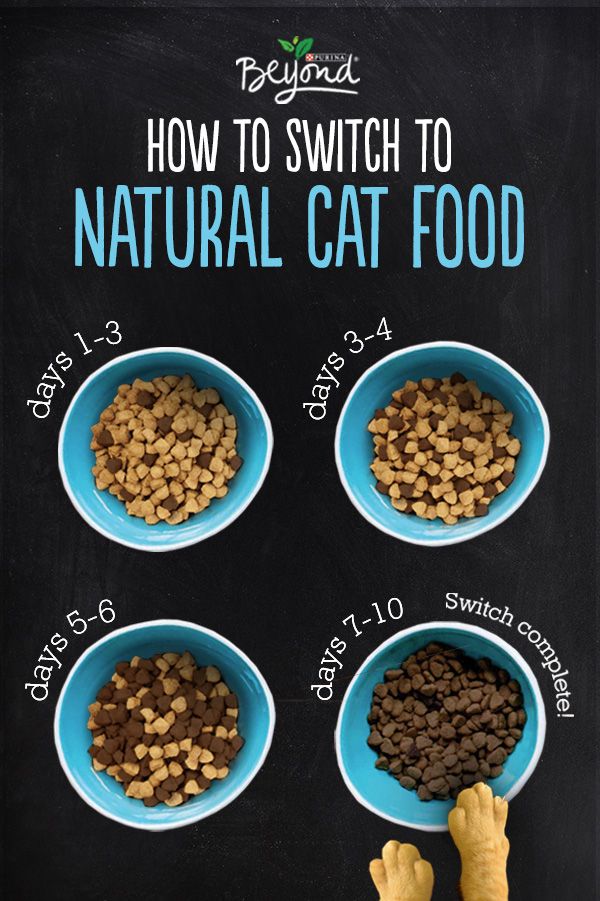Welcome, feline enthusiasts! Are you pondering how to switch your cat’s food? Worry no more!
This article is a goldmine of tips. It’ll guide you through a stress-free switching process.
Understanding Why a Gradual Switch is Crucial
Cats have sensitive tummies. A sudden diet change can cause issues like vomiting or diarrhea.
Their digestive system needs time to adapt to new food.
Step-by-step Process To Transition Your Cat’s Food
- Begin by mixing the new food with the old.
- Use a small amount of new food at first.
- Slowly increase the new food portion each day.
- Keep this up for about 7-10 days.
- Watch your cat’s reaction carefully.
- Complete the transition when you’re only serving the new food.
Helpful Duration Guide Table
| Day | Old Food (%) | New Food (%) |
|---|---|---|
| Day 1-2 | 75 | 25 |
| Day 3-4 | 50 | 50 |
| Day 5-7 | 25 | 75 |
| Day 8+ | 0 | 100 |
The table shows a safe way to mix the foods over time.
Top 5 Tips For A Smooth Food Transition
- Select a quiet time when your cat is calm for the switch.
- Ensure the new food is a hit by picking a tasty option.
- Keep fresh water available for your cat always.
- Do not rush the process. Give your cat time to adjust.
- Observe their health. Look out for any strange signs.

Credit: www.pdsa.org.uk
What to Do If Your Cat Rejects the New Food?
If your cat says, “No thank you,” don’t panic.
Try mixing in some familiar treats with the new food.
Be patient and do not force the new diet on them.
Possible Issues And Solutions
Here are common hiccups and how to solve them.
- If rejection occurs, be more gradual with the mix.
- Tummy upset? Go slower or chat with your vet.
- No interest? Make mealtime fun with games or praise.

Credit: nowfresh.com
Choosing the Right Food for Your Cat
When picking new food, focus on your cat’s age, weight, and health needs.
Key Aspects To Consider
- Younger cats need more calories and nutrients.
- Older cats may need fewer calories and more fiber.
- Special diet needs? Consult a vet for the best advice.
In Conclusion
Switching your cat’s food can be done without drama.
Just remember, slow and steady wins the race.
Take each step with care, and your cat will thank you.
Their tummy will be happy, and so will you!
Frequently Asked Questions Of Best Way To Switch Cat Food
Why Switch Cat Food Gradually?
Gradual transitions help prevent digestive upset or finicky rejection by giving your cat’s system time to adjust to a new formula.
How Long To Switch Cat Foods?
Typically, the process to switch cat foods safely spans over 7-10 days, using a mix that progressively increases the new food’s ratio each day.
Can Switching Cat Food Cause Vomiting?
Abrupt changes in diet can upset a cat’s stomach, potentially causing vomiting. Gradually introducing new food minimizes this risk.
What Are Signs Of Food Intolerance In Cats?
Symptoms like diarrhea, vomiting, and skin issues can signal food intolerance. Consult a vet if such reactions persist during a diet change.

Leave a Reply